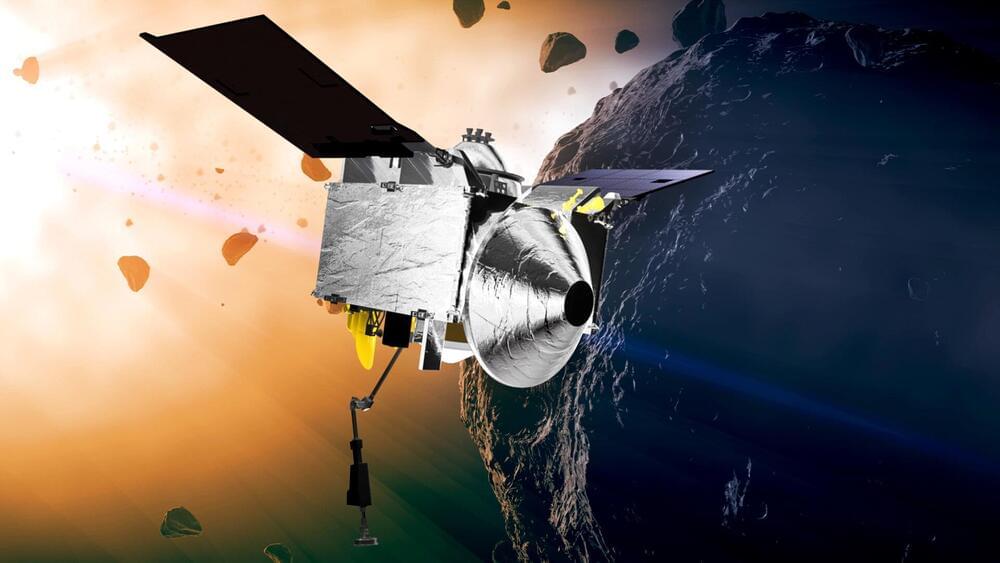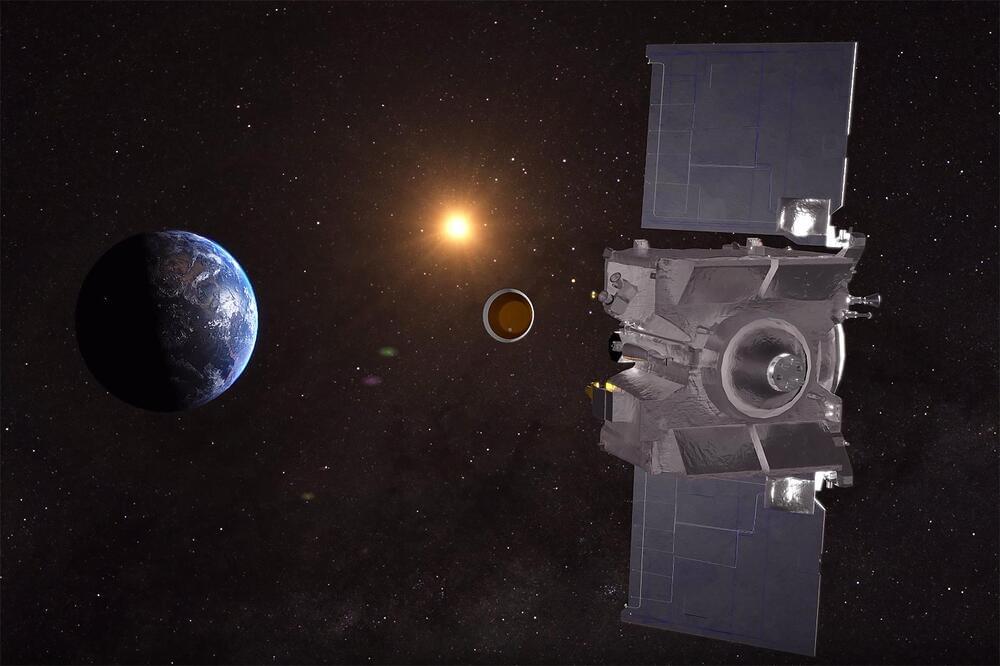Archive for the ‘existential risks’ category: Page 19
Oct 4, 2023
Joscha Bach: Artificial Consciousness and the Nature of Reality
Posted by Dan Breeden in categories: cosmology, existential risks, government, robotics/AI

https://www.youtube.com/watch?v=P-2P3MSZrBM
Joscha Bach is the VP of Research at the AI Foundation, previously doing research at MIT and Harvard. Joscha work explores the workings of the human mind, intelligence, consciousness, life on Earth, and the possibly-simulated fabric of our universe.
Support this podcast by signing up with these sponsors:
- ExpressVPN at https://www.expressvpn.com/lexpod.
- Cash App — use code “LexPodcast” and download:
- Cash App (App Store): https://apple.co/2sPrUHe.
- Cash App (Google Play): https://bit.ly/2MlvP5w.
Continue reading “Joscha Bach: Artificial Consciousness and the Nature of Reality” »
Sep 28, 2023
Bitcoin miners beef up Texas operations ahead of extinction-level event, exclusive data shows
Posted by Genevieve Klien in categories: bitcoin, energy, existential risks
The new data also confirms that Texas has cemented its position as the crypto capital of the United States, as miners flock there for abundant clean energy and a permissive regulatory environment.
Texas made up 8.43% of the hashrate in the U.S. as of the end of 2021, and that percentage has jumped to 28.50% as of July 27, 2023 — though Foundry notes that the data was aggregated during a period of heavy curtailment in July, so Texas’s percentage of actual hashrate is even greater than what’s reflected on their latest map. Zhang added that Texas’s growth in Foundry’s map also had to do with the fact that the firm took on more clients there in the past two years.
Given that the U.S. is currently the world leader in terms of its share of the collective hashrate of the bitcoin network, that makes Texas the bitcoin capital of the world.
Sep 24, 2023
The Fermi Paradox: Fallen Empires
Posted by Dan Breeden in categories: existential risks, media & arts, space travel

Go to https://brilliant.org/IsaacArthur/ to get a 30-day free trial + the first 200 people will get 20% off their annual subscription.
The cosmos seem silent and empty of any great interstellar empires, but perhaps they once existed, and if so, what titanic ruins might they have left behind?
Visit our Website: http://www.isaacarthur.net.
Watch ad-free on Nebula: https://nebula.tv/videos/isaacarthur-cyborg-armies.
Support us on Patreon: https://www.patreon.com/IsaacArthur.
Support us on Subscribestar: https://www.subscribestar.com/isaac-arthur.
Facebook Group: https://www.facebook.com/groups/1583992725237264/
Reddit: https://www.reddit.com/r/IsaacArthur/
Twitter: https://twitter.com/Isaac_A_Arthur on Twitter and RT our future content.
SFIA Discord Server: https://discord.gg/53GAShE
Sep 24, 2023
Historic OSIRIS-REx asteroid samples successfully return to Earth
Posted by Chima Wisdom in categories: asteroid/comet impacts, existential risks, security

In the morning hours of Sept. 24, a small capsule containing surface samples from asteroid 101,955 Bennu careened into Earth’s atmosphere after a seven-year journey through space. The landing of this sample capsule is the culmination of NASA’s historic Origins, Spectral Interpretation, Resource Identification, Security, Regolith Explorer (OSIRIS-REx) asteroid sample return mission, which is now the first American mission to return samples from an asteroid.
The sample return capsule (SRC) landed within a 14 by 58-kilometer ellipse at a Department of Defense property at the Utah Test and Training Range and Dugway Proving Ground in Utah. Touchdown of the SRC occurred at 8:52 AM MDT (14:52 UTC) — three minutes earlier than planned. Low winds and dry weather was present at Dugway during the landing — optimal conditions for the return and recovery of the SRC.
Continue reading “Historic OSIRIS-REx asteroid samples successfully return to Earth” »
Sep 23, 2023
Preventing Human Extinction
Posted by Dan Breeden in categories: bitcoin, cryptocurrencies, existential risks

Table of Contents:
0) — Intro : 0:00 — 1:49
1) — Ionopocalypse : 1:49 — 7:32
2) — Petrocalypse : 7:32 — 17:03
3) — Ecocalypse : 17:03 — 25:43
4) — Nuclear Apocalypse : 25:43 — 31:06
5) — Biopocalypse : 31:06 — 35:39
6) — Nanopocalypse : 35:40 — 40:15
6) — Infopocalypse : 40:15 — 52:57
7) — Geopocalypse : 52:58 — 58:59
8) — Astropocalypse : 58:59 — 1:04:14
9) — Xenopocalypse1:04:14 — 1:13:10
Sep 21, 2023
Fermi Paradox: The AI Farm Hypothesis
Posted by Dan Breeden in categories: alien life, existential risks, robotics/AI, sustainability

An exploration of The AI Farm Hypothesis and what it might mean for alien life and the Fermi Paradox.
My Patreon Page:
Sep 20, 2023
NASA spacecraft delivering biggest sample yet from an asteroid
Posted by Saúl Morales Rodriguéz in categories: asteroid/comet impacts, existential risks

Planet Earth is about to receive a special delivery—the biggest sample yet from an asteroid.
A NASA spacecraft will fly by Earth on Sunday and drop off what is expected to be at least a cupful of rubble it grabbed from the asteroid Bennu, closing out a seven-year quest.
Continue reading “NASA spacecraft delivering biggest sample yet from an asteroid” »
Sep 19, 2023
The Fermi Paradox & Panspermia
Posted by Dan Breeden in categories: evolution, existential risks

Our current theory of evolution holds that all life on Earth originated from a single, simple life form billions of years ago. But what if that life did not originate on Earth? In this episode we’ll explore the theory of Panspermia, that origin of life might be extraterrestrial in origin, and that the abiogenesis of that origin life form we descend from might have descended from the sky in a comet or some other alien source. We will explore the impact this concept would have on the Fermi Paradox if true.
Visit our sponsor, Brilliant: https://brilliant.org/IsaacArthur/
Visit our Website: http://www.isaacarthur.net.
Join Nebula: https://go.nebula.tv/isaacarthur.
Support us on Patreon: https://www.patreon.com/IsaacArthur.
Support us on Subscribestar: https://www.subscribestar.com/isaac-arthur.
Facebook Group: https://www.facebook.com/groups/1583992725237264/
Reddit: https://www.reddit.com/r/IsaacArthur/
Twitter: https://twitter.com/Isaac_A_Arthur on Twitter and RT our future content.
SFIA Discord Server: https://discord.gg/53GAShE
Sep 18, 2023
Armageddon-style mission to stop asteroid Bennu collision with Earth ends this week
Posted by Quinn Sena in categories: asteroid/comet impacts, existential risks, military
NASA is edging closer to the conclusion of its ambitious seven-year mission, aiming to prevent a catastrophic collision of a massive asteroid named Bennu with Earth. Recent findings have indicated that there’s a 1 in 2,700 chance of Bennu slamming into Earth on September 24, 2182.
Roughly the size of the iconic Empire State Building, Bennu spans about a third of a mile wide. The potential aftermath of its predicted collision with Earth could equate to the explosive energy of 22 atomic bombs.
The asteroid makes its presence felt by passing Earth approximately every six years. However, scientists anticipate that its most perilous close encounter could be a mere 159 years away.










